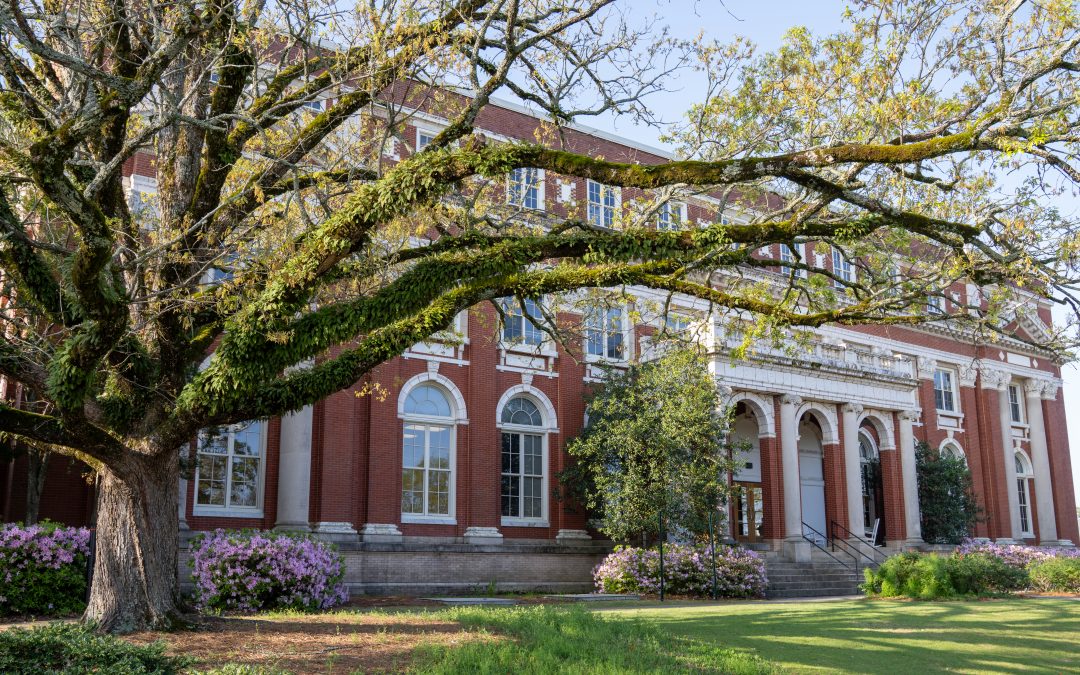by JAMIE CREAMER
 A College of Agriculture agronomist who established a research plot on the Auburn University campus eight years ago to evaluate medicinal plants as high-value alternative crops for Alabama growers has converted the verdant patch into a teaching and demonstration garden that’s open to the public.
A College of Agriculture agronomist who established a research plot on the Auburn University campus eight years ago to evaluate medicinal plants as high-value alternative crops for Alabama growers has converted the verdant patch into a teaching and demonstration garden that’s open to the public.
Nestled between two stands of sugar cane on the agronomy farm off Woodfield Drive, the 75- by 40-foot Medicinal Plant Collection boasts more than three dozen different species and varieties of plants that have healing properties, from coneflowers and chamomile to licorice and lemongrass. From late spring through summer, the garden that crop, soil and environmental sciences department professor Dennis Shannon began in 2006 with just a handful of plant species is a kaleidoscope of colors and textures.
Shannon credits the plant collection’s hearty appearance to Tia Gonzales, a local herbal guru who manages the garden, more as a labor of love than anything else. Working limited hours through the university’s temporary employment services, Gonzales makes the most of every second she’s on the clock, planting, weeding, watering, pruning, nurturing and harvesting.
“While it is not a formal herb garden, our collection is the only representation of medicinal or otherwise useful herbs on campus,” Gonzales says. “And here we are, a land-grant college. My hat’s off to Dr. Shannon for finding means to keep the garden going.”
Gonzales is a walking encyclopedia on the healing properties of plants, and from May 15 until fall, she will be sharing herb trivia the third Thursday of every month, from 2 to 3 p.m., as she leads guided tours of the garden. For who visit the site on their own, Shannon and Gonzales have installed a document box at the garden that contains copies of a list of every plant in the collection and its medicinal uses.
Curcuma longa, commonly known as turmeric, is the hottest medicinal plant of late because of the anti-infection, anti-inflammatory, antacid and anti-cancer properties attributed to it. And, in fact, Shannon and Gonzales will be expanding the original collection this spring to include a nonadjacent 1,200-square-foot plot devoted solely to turmeric. Shannon says a dietary supplements manufacturer has been analyzing the curcumin content in turmeric plants from the Auburn collection in recent months and has shown interest in buying organically grown turmeric from Alabama growers if the curcumin level is high enough.
In the past couple of years, faculty from across campus as well as from Tuskegee and Jacksonville State universities have brought their classes to tour the garden. This fall, Barbara Kemppainen, professor of pharmacology in College of Veterinary Medicine, will be among those faculty.
“I team-teach an elective course for veterinary students on complementary and alternative veterinary medicine, and about a third of the course is focused on the use of medicinal plants to treat animal diseases,” Kemppainen says. “In the future, the course will include an herb walk in Dr. Shannon’s medicinal plant garden.”
For detailed directions to or more information about Auburn’s Medicinal Plant Collection, contact Gonzales at greentia@live.com or Shannon at shannda@auburn.edu.




